Published: 30th January 2024 | Author: Tanya Russell
Bronze sculptures are often expensive for several reasons, reflecting the labour-intensive and intricate process involved in creating them. As such, we often find that people want to understand why bronze sculptures are expensive, particularly before they consider buying a piece of bronze artwork.
In this article, we outline a few of the reasons why bronze sculptures are more expensive that alternative sculpting or art mediums, and . To understand a bit more about the cost of bronze sculptures in general, we recommend reading our article on “How much does bronze cost?”.
Labour-Intensiveness & Skill
As outlined in our article comparing the differences between foundry bronze and bronze resin, foundry bronze sculptures are most often made using the lost wax method of casting. Traditional lost-wax casting may be the most common technique used in bronze sculpture, but it takes many years to master, and often involves lots of different technical skills coming together. The lost-wax process involves creating a wax model, encasing it in a heat-resistant ceramic mould, melting out the wax, and then pouring molten bronze into the mould. After that the pieces are joined, finished to a high standard, and patinated (coloured). As a highly skilled, complex, time-consuming and labour intensive process, foundry bronze metal casting can be relatively expensive.
There are less expensive types of casting, predominantly using materials that are cheaper, such as resin, iron and concrete. We offer many of our statues in bronze resin, which, although it uses bronze powder to achieve a similar colour, uses far, far less of the metal than a real foundry bronze metal sculpture.
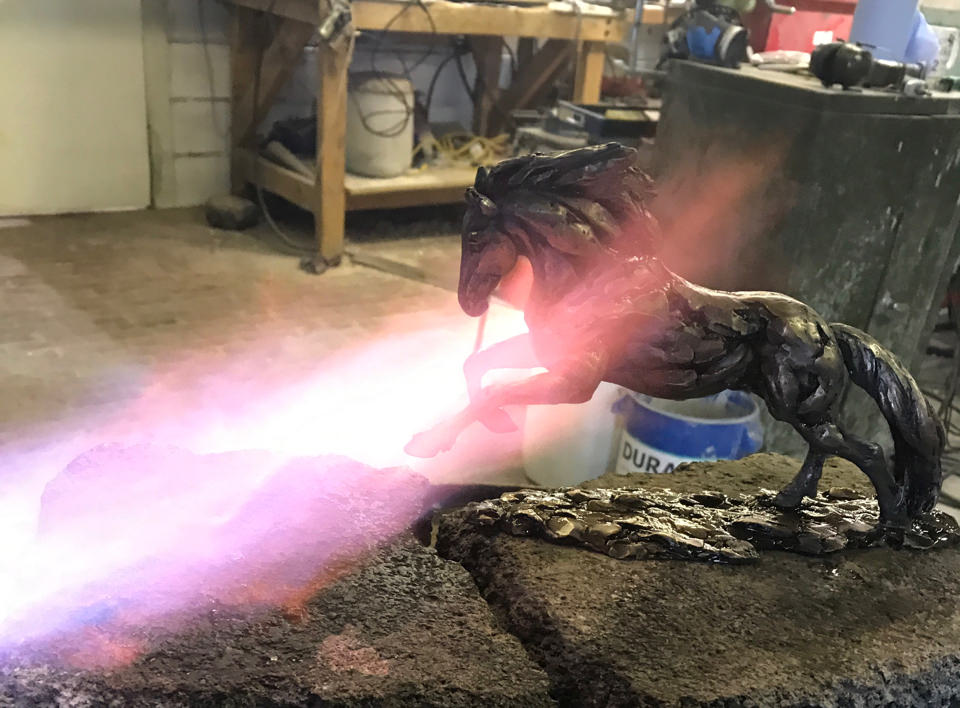
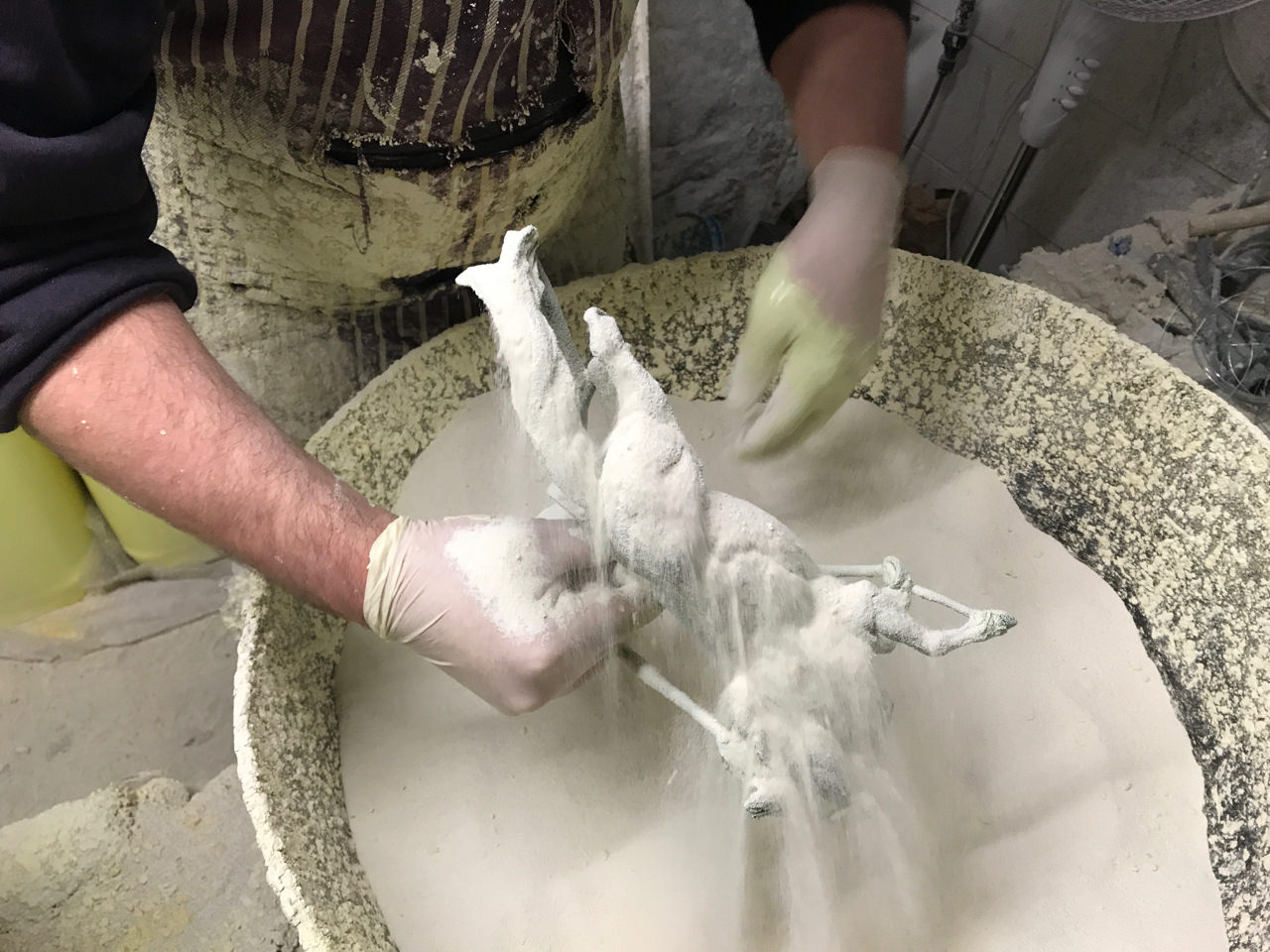
As you can see, there are many steps in the bronze casting process that can influence the expensiveness of bronze sculptures!
You can read more about how bronze is made and the process of creating bronze for sculptures in our article on the bronze making process.
Foundry Fees
The expense of a foundry bronze statue can be roughly broken down into sections: sculptor fees, foundry fees, and a gallery fees. A foundry is a workshop that has the facilities to melt metal at very high temperatures, so that it can be cast in new shapes.
As the foundry plays a crucial role in transforming an artist’s original sculpture into a finished bronze piece, the foundry fees cover many essential parts of the process of making a bronze sculpture:
- Mould Making: Creating a mould is one of the initial steps in the bronze casting process. Most foundries offer mould making, which is considered a completely different area of expertise. All moulds break down eventually, so the cost of a bronze casting includes a little bit of the cost of each mould. A mould used frequently might last for roughly 12 castings. Bronze casting is kinder to a mould than resin casting, and an old mould may be useless after only being used a handful of times as the rubber may have broken down.
- Wax Casting: Once the mould is made, wax replicas of the original sculpture are cast. This process involves both material costs (for the wax) and labour costs for the casting process.
- Investment Casting: The wax replicas are then invested in a ceramic shell, and the wax is melted out to create a cavity for the molten bronze. The investment casting process incurs costs for materials and labour.
- Bronze Casting: The actual casting of the bronze sculpture involves melting the bronze and pouring it into the prepared mould. This step includes costs for the bronze material, the energy required for melting, and the expertise of foundry workers.
- Finishing and Patination: After casting, the bronze sculpture undergoes finishing processes to remove imperfections, and it may be patinated to achieve a desired colour or surface finish. Foundry fees cover the labour, materials, and expertise involved in these final touches.
- Overhead Costs: Foundries have overhead costs, such as rent, utilities, insurance, and other operational expenses. These costs are factored into the overall fees charged by the foundry.
- Reputation and skill: Foundry fees go up as their reputation increases, and this usually, but not always goes hand and hand with their skill relative to other foundries.
Artistic Skill and ‘Sculptor Fees’
There are surprisingly few sculptors in the world compared to 2d artists, such as painters, and there are fewer who cast statues in foundry bronze. Very few places still teach the skills professional sculptors use in their careers. It is expensive to teach sculpting techniques, such as modelling and casting, particularly as it takes years of dedicated teaching to learn them. Schools and universities can provide only a taste of a discipline, when they have so many techniques, forms of art, and so much history and conceptual thinking to introduce. There are many limiting factors for students too, who need space in their own homes in order to develop their sculpting, and who need more money than painters to create their art. The lack of long courses on sculpting makes the profession reliant on apprenticeships, where knowledge and techniques are passed on through many years of working with a practicising sculptor. It took me 7 years to learn how to sculpt, studying with my parents, who were both professional sculptors. Bronzes are expensive partly because there aren’t many people who can sculpt.
And while making creative and high-quality bronze sculpture requires significant artistic skill and experience, but it also requires a significant amount of money. A painter can outlay two-hundred pounds or two-hundred and fifty dollars to create a small painting. A sculptor may spend a thousand pounds, or one thousand-two-hundred-and-fifty dollars just to create a small bronze artwork (paying for sculpting materials, then moulding, and then bronze casting). Creating bronze statues requires a high degree of financial investment, and an enormous amount of self-confidence and entrepreneurial risk. It can take decades for a sculptor to find a balance between expressing their artistic ideas, and creating bronze sculptures that sell. All the while they must contend with all the pressures of any small business, such as learning to market themselves and their art, budgeting, dealing with suppliers, learning about business development. These are common pressures and trials, but artists often undergo them alone. Very few work in collectives, and most rely entirely on themselves, or the help of a partner or small circle of family. It makes successful sculptors a rare (and sometimes a strange) breed! And those sculptors tend to be so busy that the price for their skills, their ‘sculptor fees’, makes their bronze statues more expensive.
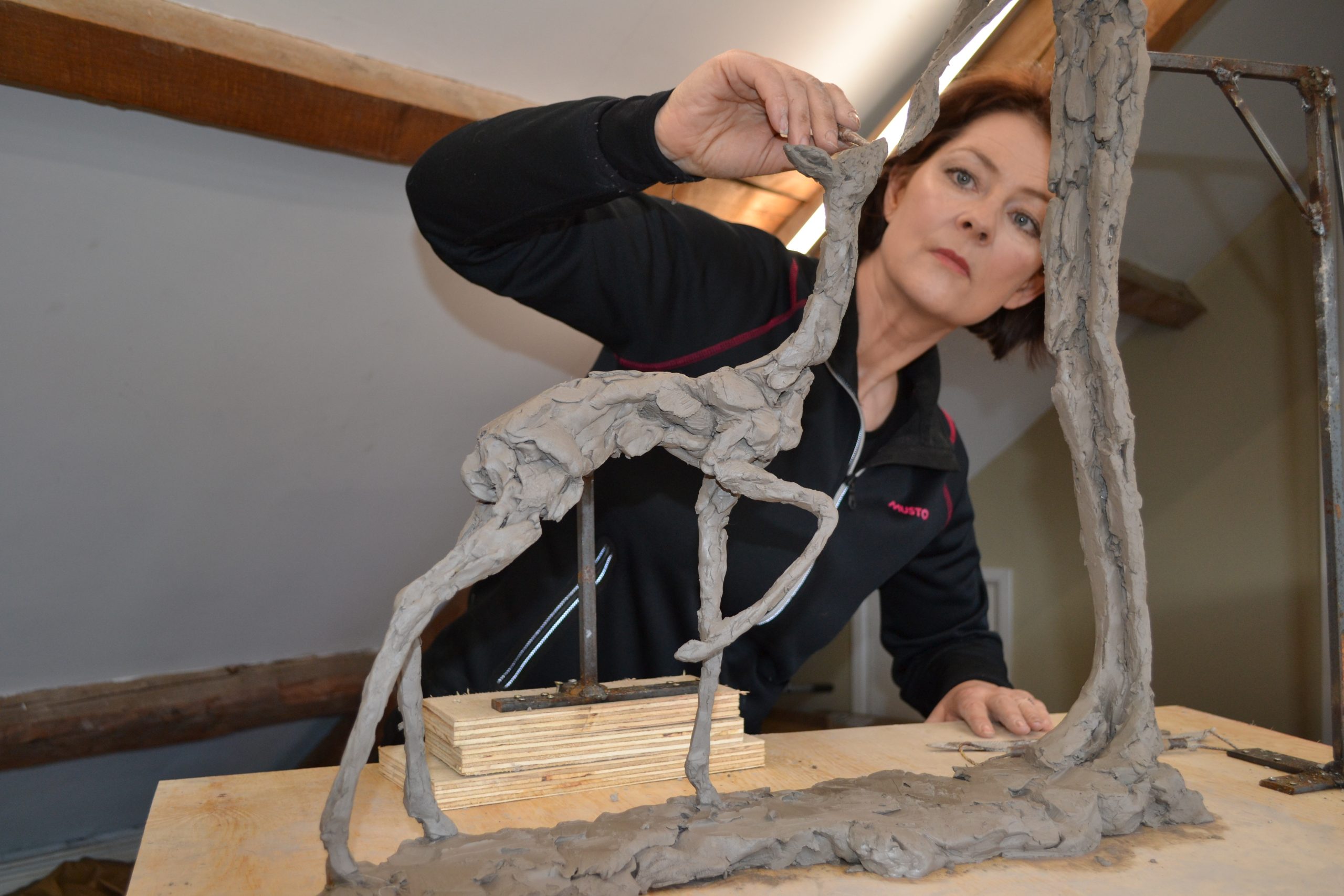
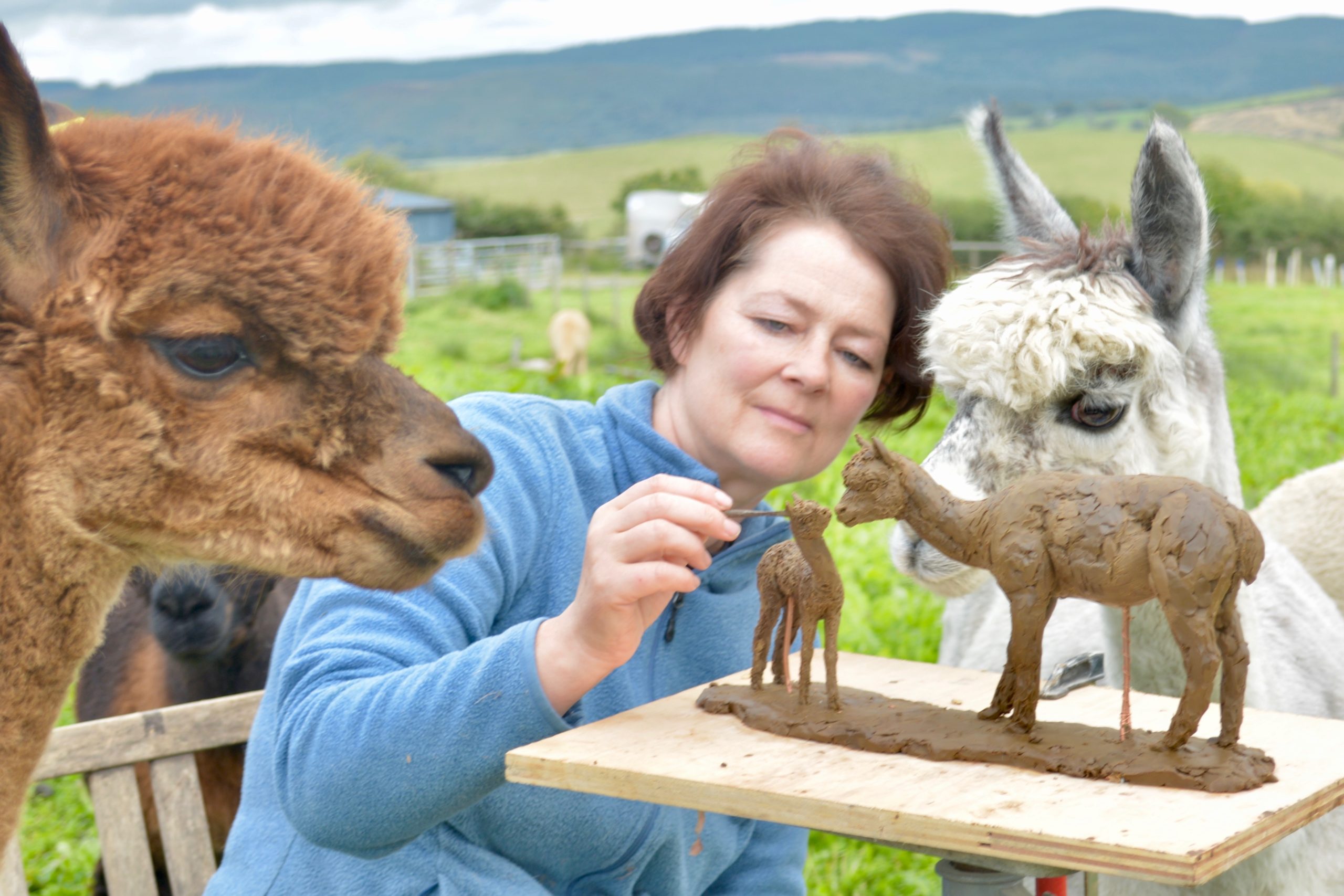
Gallery fees
A big, big part of the expense of bronze statues is gallery fees. Most established sculptors either work with galleries and have to increase their prices accordingly, or they don’t, and unfortunately this means that you are less likely to have heard of them.
Online art market places have transformed sculptors’ abilities to get their work out to art lovers directly. But even these marketplaces have fees that have to be considered when pricing a foundry bronze statue. But as pricey objects, many clients prefer to see a bronze statue in person before buying it. Physical galleries play an enormous role in curating bronze sculptures, and in generating interest amongst their existing client base. Commonly a 2d artist like a painter might pay a gallery between 30 and 55% of the price of their artwork in commission. Inexperienced (or highly experienced and famous) galleries might ask a sculptor to pay a similar amount of commission, but it is far more common for a sculptor to pay 25-40%, because their creation costs are relatively so much higher.
This might not sound like much, but lets see how it affects the price of a bronze statue:
– A mould maker charges the sculptor 1,500 pounds or dollars to mould their clay sculpture. Let’s assume we’ll cast 8 statues from the mould.
– A foundry charges 3,500 pounds or dollars to cast the sculpture in bronze
– A gallery asks for 35% commission on a sale.
So if a sculptor prices their bronze statue at 8,000 pounds or dollars, they have 5,200 left after paying the gallery, they have 1,700 left after paying the foundry, they have 1,513 left after stretching the price of the mould over 8 statues.
We haven’t considered any other costs of production or overheads for the sculptor. And that isn’t even really the point, which is: watch what happens when the artist charges more for the bronze statue.
If an artist now puts the price up to 10,000 from 8,000 for the same statue, then they have 6,500 left after paying the gallery, they have 3,000 left after paying the foundry, they have 2,812 left after stretching the price of the mould over 8 statues.
Does that matter? Well, when you are represented by a gallery, you agree that all you prices are the same everywhere, so as not to unfairly undercut them. The gallery got 3,500, so in theory, that sculpture could have been 3,500 cheaper.
This takes us back to the question, is the sculptor represented by galleries (and therefore, are the bronze statues more expensive than they might otherwise be?) It is a fairly simple question. Have you heard of the sculptor? If you have, then its 90% likely that they are represented by galleries, and there is a gallery fee built into the price.
Don’t worry, this is good news for you, if you made it through this section of the article. Because unless you came through a gallery, maybe there is a better price to be had on your bronze if you ask about it. And if you came through a gallery, bad luck, but they did a lot of work to bring you together with your new favourite sculptor in the first place. So don’t expect a sneaky discount, a sculptor knows how important a gallery is and will want to make sure they receive their commission so their gallery stays open!
Editioned Bronze
If you are wondering why a bronze may be more expensive than another comparable piece, it may be because the bronze is editioned.
Limited edition bronze sculptures carry greater exclusivity as their limited number curtails the sale of further copies. This adds to their appeal for collectors and art enthusiasts, to whom the scarcity of an artwork will appeal – because scarcity, along with the artist’s reputation and the quality of the statue, helps to determine a sculpture’s value and, therefore, expensiveness.
Read more on editioning in our article: What are Bronze Editions?
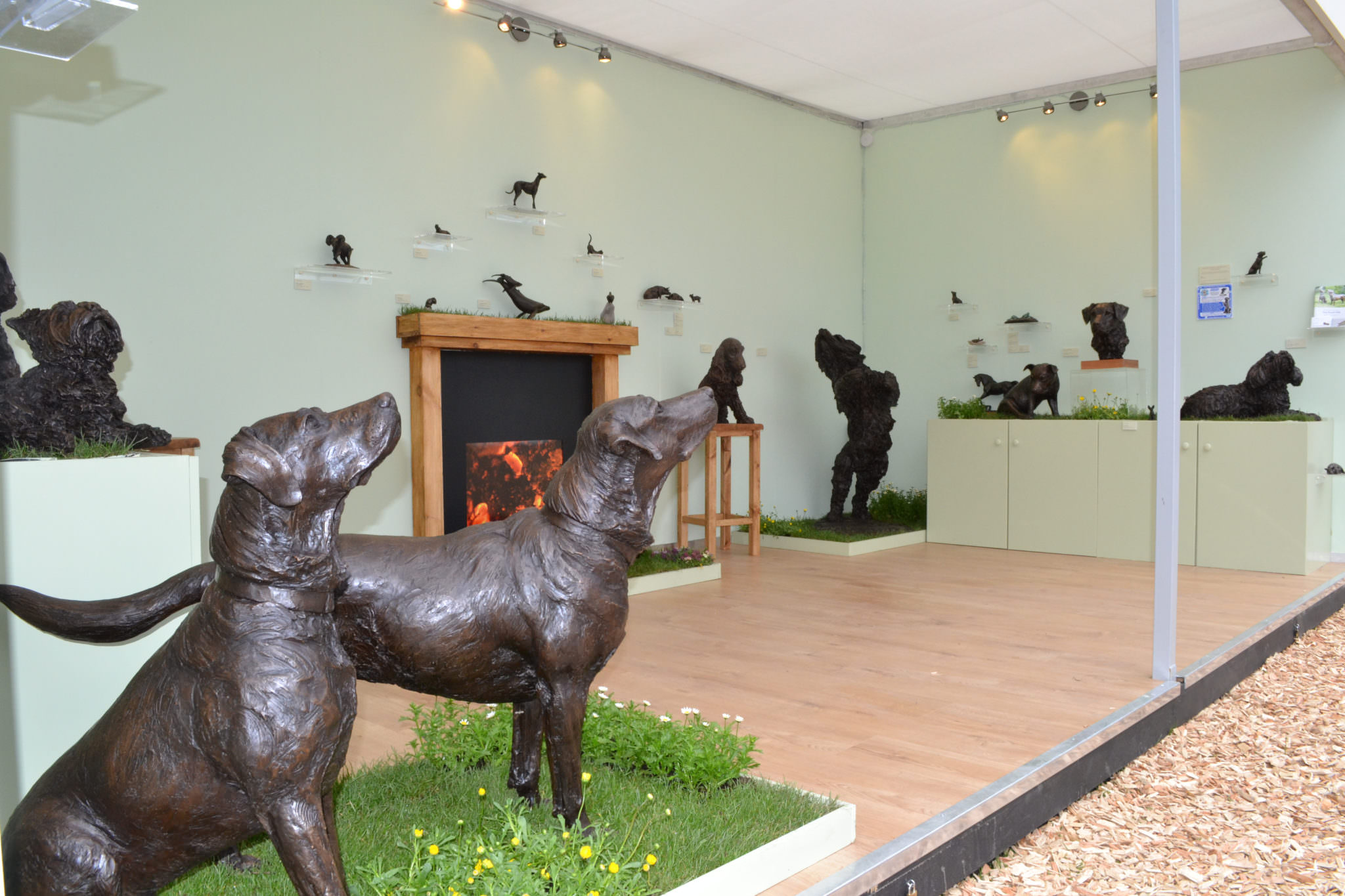
Art Market Factors
Prices in the art market in general can be influenced by factors such as the artist’s reputation and demand for their work, as well as whether or not they are critically acclaimed. This is not just exclusive to bronze but to the art market in general. Therefore, well established and highly regarded artists tend to command higher prices for their work, making them more expensive.
Final Takeaways
The cost of bronze sculptures is influenced by a combination of material expenses, artistic skill, labour-intensive processes, editions and the art market. The unique and enduring nature of bronze as a medium, along with the craftsmanship involved, contributes to the overall value and price of bronze sculptures in the art market.
Explore Related Articles
ASTON VILLA F.C. unveils my Lion to celebrate their 150th year
Due to be unveiled in May, I have created a to scale clay, which is now being cast in Foundry Bronze metal
How to measure your dog in a Lying Down pose, for a customised statue commission
If you think you might want a statue in the future, it can be a good idea to take some measurements of your own dog. Here’s how to measure them in a lying down position.
Sculpture plinths, pedestals and columns for statues
Finding the right plinth or pedestal for your statue: including a list of suppliers, some examples of different type of pedestal, how to make your own a plinth, how to fix a statue onto a plinth.

Tanya Russell MRBS
Bronze Sculptor
Tanya Russell has become well known over the last 30 years for her life-like and vibrant animal sculptures.
Having apprenticed for 7 years with her parents, sculptors Lorne McKean FRBS and Edwin Russell FRBS and after practicing as a sculptor for a number of years, she founded the The Art Academy in London Bridge, now a thriving art college. She has completed many public and private commissions nationally and internationally.
For Tanya, her practice is not only about capturing the animals she sculpts with marks and movement. It’s about our relationships with those animals and their welfare.

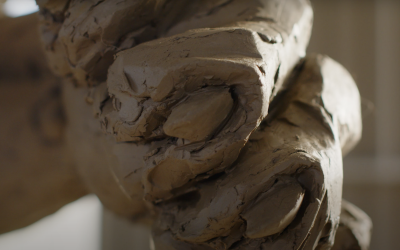
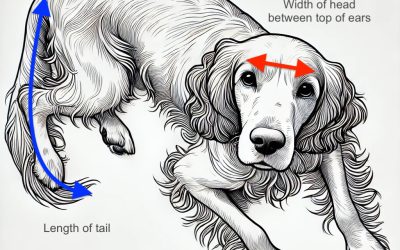

Follow The Artist
Keep up to date with Tanya's latest work!